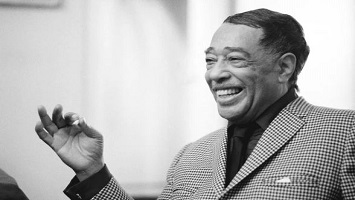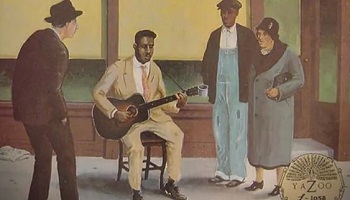
Counting the Cost of Genius Exploring Bob Dylan’s Net Worth and the Legacy of His Timeless Music
Few names in the world of music resonate as profoundly as Bob Dylan’s. For over six decades, Dylan has defied convention, pushed boundaries, and redefined the meaning of folk, rock, and protest music. Known for his poetic lyrics, distinctive voice, and unrelenting commitment to artistic authenticity, Dylan has built not only a vast catalog but also an impressive fortune. Today, as one of the wealthiest and most influential figures in the music industry, Dylan’s net worth raises questions: How did he accumulate it, what does it represent, and how does it compare to the impact of his cultural contributions?
In this post, we delve into Bob Dylan’s financial legacy, exploring how his earnings reflect a lifetime of musical genius, resilience, and innovation. From record-breaking royalties to unprecedented music sales, Dylan’s career offers a fascinating glimpse into the interplay between art, commerce, and cultural legacy.
A Quick Look at Bob Dylan’s Net Worth
As of the latest estimates, Bob Dylan’s net worth is approximately $500 million. This figure is extraordinary not only for its size but also for what it represents in an industry where fame and fortune can be fleeting. Dylan’s financial success stems from a combination of factors, including music sales, concert tours, publishing rights, and lucrative licensing deals. His timeless music and lyrics continue to generate substantial income, making him one of the wealthiest artists in history.
The Journey to Fame: A Humble Beginning
Bob Dylan, born Robert Allen Zimmerman in Duluth, Minnesota, in 1941, began his career in the early 1960s as a folk singer in Greenwich Village, New York City. His early influences included Woody Guthrie, Little Richard, and traditional folk and blues musicians. By the time he released his self-titled debut album in 1962, Dylan was already making waves with his unique voice, guitar skills, and harmonica.
It was his second album, The Freewheelin’ Bob Dylan (1963), that brought him national attention, particularly with the release of the iconic protest song, “Blowin’ in the Wind.” Dylan’s music captured the spirit of the times, becoming the soundtrack for a generation fighting for civil rights, peace, and change. As his popularity grew, so did his financial potential. He quickly transitioned from folk clubs to larger concert venues, and with each album release, his influence and earnings expanded.
The Era of Iconic Albums and Groundbreaking Success
Throughout the 1960s, Dylan produced a series of albums that would solidify his place in music history. The Times They Are a-Changin’, Bringing It All Back Home, Highway 61 Revisited, and Blonde on Blonde are just a few examples. Each album pushed creative boundaries, blending folk, rock, and poetic lyricism in a way that few had seen before.
His success in this era came not only from record sales but also from concert tours, which became another major source of income. However, Dylan’s earnings in the 1960s and 1970s are modest compared to the explosive revenue streams that developed later in his career. Even in his prime, Dylan remained an elusive figure, often shunning commercial endorsements or flashy displays of wealth.
Royalty Streams: The Power of Timeless Music
One of the most significant contributors to Dylan’s net worth has been the royalties from his music catalog. His songwriting ability has led to the creation of songs that remain popular decades after their release. Royalties from albums, radio airplay, digital streaming, and cover versions by other artists have generated a steady income over the years.
Notably, Dylan’s music has been covered by countless artists across various genres, including legends like Jimi Hendrix, Johnny Cash, and Adele. Each cover, streaming play, or radio broadcast generates royalties for Dylan, adding to his wealth long after the initial release of his songs. For a songwriter as prolific as Dylan, these royalties are immense, representing a vast stream of passive income.
The Landmark Sale of His Music Catalog
In 2020, Dylan made headlines with the sale of his entire songwriting catalog to Universal Music Group for an estimated $300 to $400 million. This sale was monumental for several reasons. For one, it underscored the enduring value of Dylan’s music, with his songs expected to generate revenue for generations. It also demonstrated the growing demand for iconic music catalogs as major music labels and investors seek valuable, evergreen assets in a digital-first world.
For Dylan, the catalog sale represented a strategic move. Rather than holding onto his rights indefinitely, he capitalized on their value, securing a multi-million-dollar payout that significantly boosted his net worth. This transaction positioned him as one of the highest-earning musicians, while also ensuring his music’s reach and influence continue through Universal’s resources and global distribution.
Touring: A Relentless Work Ethic and Another Major Revenue Source
Even at an age when many would consider retirement, Dylan has remained committed to performing live. Since 1988, he has been on what fans call the “Never Ending Tour,” playing hundreds of shows across the globe each year. Touring has consistently been one of Dylan’s primary revenue sources, allowing him to connect with fans and share his music in its purest form. Despite changes in the music industry, Dylan’s dedication to touring has kept his music alive and sustained his wealth.
Dylan’s concert tickets are often in high demand, with ticket prices reflecting his legendary status. For an artist like Dylan, who commands top-dollar for his shows, each tour can generate millions in revenue. Unlike record sales, which have fluctuated due to digital streaming and piracy, touring has provided Dylan with a stable, lucrative income source.
Licensing and Brand Partnerships
While Dylan has historically avoided commercial endorsements, he has occasionally licensed his music for various purposes. One notable example is the use of “The Times They Are a-Changin’” in advertisements and films. These deals are highly selective, as Dylan values artistic integrity and carefully chooses how his music is used in media.
In recent years, licensing has become a profitable avenue for artists as companies seek to capitalize on nostalgia and the cultural resonance of classic songs. While Dylan is famously particular about his brand, the occasional licensing deal has added to his wealth and introduced his music to new audiences.
Awards, Honors, and the Priceless Value of Influence
Beyond his financial wealth, Bob Dylan’s legacy is priceless. In 2016, he was awarded the Nobel Prize in Literature, a recognition that underscored the cultural and artistic value of his work. This honor placed him in a league of his own, with few artists having achieved similar levels of critical acclaim.
Dylan’s influence extends beyond music into literature, visual arts, and social activism. His songs have inspired generations of writers, musicians, and activists, with his lyrics dissected in classrooms, quoted in speeches, and studied in cultural analysis. In many ways, Dylan’s true wealth lies in his lasting impact on society, a legacy that no monetary figure can capture.
The Complex Balance of Art and Wealth
Bob Dylan’s net worth reflects more than just the revenue from his songs, tours, and catalog sales. It tells a story of a man who, despite fame and fortune, has stayed true to his values. Dylan’s wealth has allowed him to maintain creative freedom, avoid financial pressures that might have compromised his art, and explore new projects on his own terms.
For Dylan, financial success appears to be a byproduct rather than a primary motivation. His music continues to resonate because it is rooted in honesty, rebellion, and a quest for truth. This commitment to authenticity has sustained his influence and wealth over the years, proving that true art has a unique staying power.
Conclusion: The Timeless Wealth of Bob Dylan
Bob Dylan’s net worth, estimated at around $500 million, is a testament to a career built on talent, resilience, and a relentless pursuit of authenticity. His earnings reflect the power of timeless music, showing that true artistry can create both financial and cultural wealth. While he may be one of the wealthiest musicians alive, Dylan’s legacy far exceeds his monetary fortune, touching lives, sparking movements, and shaping the future of music and literature.
As fans continue to listen, study, and be inspired by Dylan’s work, his net worth becomes a symbol not just of personal success, but of a genius that transcends generations. Bob Dylan’s wealth, in the truest sense, is his timeless influence—a legacy that will continue to enrich the world long after the final note is played.



